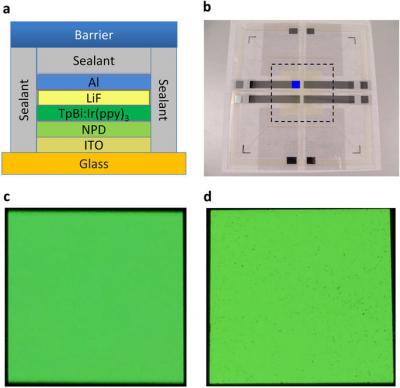OLED displays are very sensitive to oxygen and moisture, and the need to protect the displays is one of the major challenges of this next-generation display technology. First generation OLED displays were protected with a glass barrier, but glass is not easily flexible and so cannot be used in flexible OLEDs. Flexible OLEDs are today encapsulation with a thin-film encapsulation layer made from both organic and in-organic materials, and companies are searching for better OLED encapsulation technologies.

Graphene is the world's most impermeable material, and so the idea of using graphene as a barrier layer for OLED has been around for a while. In 2015 the UK launched a collaboration project called Gravia to develop graphene-based encapsulation, and the project's team has now reported their results.
Graphene is permeable to all gases in its pure form, but of course real life materials are never entirely pure and defects and holes harm the material's permeability. The new research used ALD and CVD to create large-area high-quality single-layer graphene sheets which were than stacked to create a multi-layer coating. Multi-layers are required as a single graphene sheet is never perfect. The researchers say that a ~10 nm barrier layer that includes 3-4 layers of graphene (with AlOx in between) is an effective solution for OLED displays. The 10 nm layer maintains a high optical transparency (>90 %) and high flexibility.
In the image above you can see the OLED structure, a final device photo (7x7 cm2, the blue box is the active OLED element) and a 1x1 cm2 emitting OLED just after fabrication and one week later (right).
The researchers say that their solution is comparable to existing commercial OLED encapsulation technologies. While this proves the potential effectiveness of a graphene-based encapsulation for OLEDs, its not clear whether this could be performed commercially at a low enough cost and at industrial scales.
The Gravia project is a collaboration effort led by the University of Cambridge. Other project members are the UK CPI institute, FlexEnable and the National Physics Laboratory (NPL).